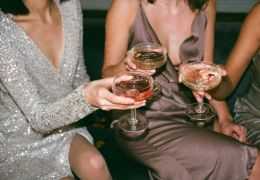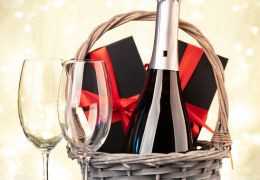Champagne Valentin Leflaive embodies the alliance between Burgundian heritage and Champagne excellence. Thanks to a...

Free delivery for purchases over € 210 in the E.U.
Club We Love Bubbles: Collect points with every purchase
| ❤️ CLUB We Love Bubbles: 100 € spent = 20 loyalty points |
| ❤️ CLUB We Love Bubbles: €100 spent = 20 loyalty points |
| ❤️ CLUB We Love Bubbles: €100 spent = 20 loyalty points |

Champagne Valentin Leflaive embodies the alliance between Burgundian heritage and Champagne excellence. Thanks to a...

Champagne Petit et Bajan, founded in 2008 by Richard Petit and Véronique Bajan, embodies the alliance of two...

Champagne Napoléon, founded in 1825, embodies the perfect blend of family tradition and imperial prestige. Crafted...

Champagne Lebeau-Batiste, a family-owned winery in Chavot-Courcourt, embodies the combination of artisanal tradition...

Champagne Telmont, founded in 1912 in Damery, embodies the perfect blend of family heritage and innovation. Its...













Champagne tasting is much more than a simple act of drinking. It is a sensory experience that allows us to fully appreciate the quality and nuances of such a special sparkling wine. In this article, we'll explore the different methods of tasting champagne, emphasizing the key things to consider in order to fully appreciate this exceptional drink.
Champagne comes in different styles, each with its own distinct characteristics and aromas. From brut champagne, the driest and most commonly consumed, to mild champagne, sweeter and ideal for desserts, there is something for everyone. By tasting different styles of champagne, you can explore the full range of flavors, aromas and textures that this drink offers.
When tasting champagne, several elements are important to take into account. First of all, the dress, that is to say the color of the champagne, can vary from pale gold to intense gold passing through salmon pink. Observe the robe of the champagne to appreciate its clarity and brilliance.
Then, the nose of the champagne is crucial to reveal its aromas. Gently swirl your glass to release the aromas and dip your nose above the glass to appreciate them. You will be able to detect fruity, floral, spicy notes, as well as aromas of brioche, toast or honey, characteristics of aging on lees.
On the palate, observe the liveliness of the bubbles and appreciate the texture and structure of the champagne. Note the dominant flavors, the balance between acidity, sweetness and bitterness, as well as the length of the finish, ie the persistence of flavors in the mouth after swallowing the champagne.
If you want to become a real expert in champagne tasting, here are some tips to follow. First, be sure to serve the champagne at the correct temperature. In general, non-vintage champagnes are served between 8 and 10 degrees Celsius, while vintage champagnes can be served slightly cooler, between 9 and 12 degrees Celsius. The serving temperature plays a crucial role in the perception of aromas and flavors.
Next, choose the right champagne glass. Prefer flutes or narrow cuts, which allow you to concentrate the bubbles and better appreciate the aromas. Avoid glasses that are too large, which can disperse bubbles and dilute aromas.
Finally, serve moderate amounts of champagne for each tasting. A small amount is enough to fully appreciate the characteristics of the wine. Don't forget that champagne tasting is an exercise in finesse and subtlety.
By taking the time to observe, smell and taste, you will discover all the richness and complexity of this exceptional drink. Whether you are a champagne lover or just want to learn more about this method of tasting, it is important to remember that each bottle of champagne tells a unique story. So the next time you open a bottle of champagne, take the time to taste and enjoy every sip.
What are your tips for a successful champagne tasting? What are your favorite bottles of champagne? Leave us your comments and share your passion for this sparkling drink!

 A Story Of Friendship: Champagne Pol Roger and Sir Winston Churchill
A Story Of Friendship: Champagne Pol Roger and Sir Winston Churchill Champagne-based cocktails
Champagne-based cocktails Champagne rosé
Champagne rosé Serve a good champagne
Serve a good champagne Where to buy Deutz champagne ?
Where to buy Deutz champagne ?Follow us